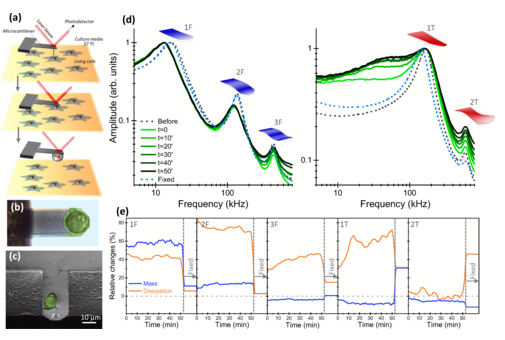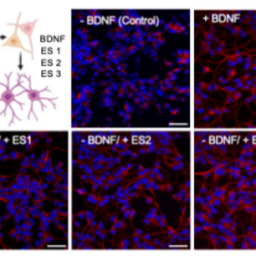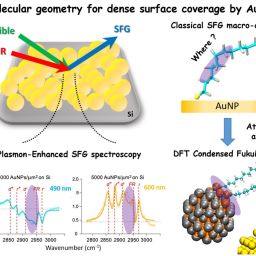
Authors: Verónica Puerto-Belda, Jose J. Ruz , Carmen Millá, Álvaro Cano, Marina L. Yubero, Sergio García, Priscila M. Kosaka, Montserrat Calleja and Javier Tamayo ,
Article.
PRX LIFE vol: 2. page:013003.
Date: 18.JAN. 2024.
Doi:10.1103/PRXLife.2.013003
Abstract:
he question of whether human living cells in physiological conditions exhibit mechanical resonances has remained unresolved for more than 70 years. We here construct a theoretical model to predict how these hypothetical vibration modes of a living cell can modify the stochastic response of a supporting micromechanical resonator. The key signatures that demonstrate the existence of these vibration modes are then searched for experimentally. To this aim, single human breast epithelial cells were attached to the surface of compliant small microcantilevers. Close examination of the frequency spectra of the thermal fluctuations of the microcantilever over a high-frequency range of 1 kHz–1 MHz revealed anomalies that are consistent with our theoretical predictions. We identify the stochastic coupling of the first and third vibration modes of the cell with the torsional and flexural vibration modes of the cantilever, respectively. These mechanical resonances are very broad and are located at 10–30 kHz and 150–180 kHz, respectively. The analysis of the experiments allows us to obtain information on the temporal evolution of several physical properties of the cell, in addition to the resonance frequencies, during the adhesion process—such as the mass, viscoelasticity, and contact area. These results open multiple avenues in our understanding of single cell mechanobiology, vibrational spectrometry of living cells and mechanical destruction of cancerous cells by targeting specific cell frequencies.




